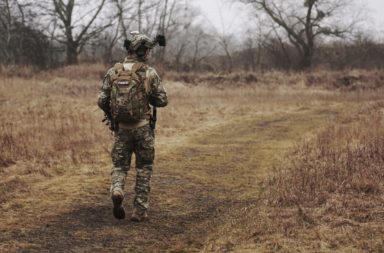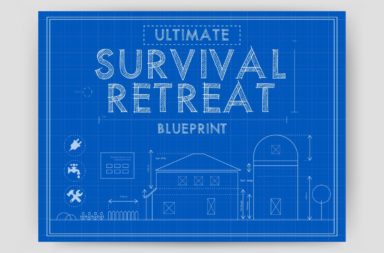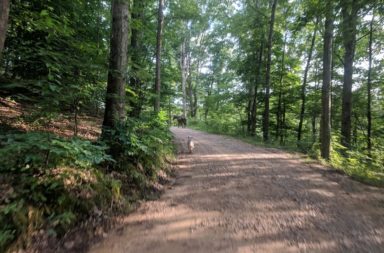When any sort of emergency strikes; natural disaster, an accident, or a SHTF situation arises, these are the times when you need to have pre-prepared a set of equipment to keep you or your loved ones alive. We refer to this commonly as a Bug Out Bag or BoB. The difference between this and a personal survival kit (PSK) are that this is aimed at being a long-term survival kit. This particular bag will be something that can sustain your life for weeks, months or even longer.
The first thing to consider is whether the bag itself is heavy or light. When I say bag it can be a backpack as well. You don’t want unnecessary weight but rather save the extra pounds you can carry for necessary gear. Decide on whether you want an internal frame or external frame. As a general rule, a person should NOT carry more weight than 25 percent of your body weight. This is to reduce stress on the muscles and joints. As an active duty S.E.R.E. instructor I commonly carried 65 to 80 pounds when I weighed 180 pounds, which accounts for the bad knees, shoulders and the constant back pain. The exception to the rule, in my opinion, would be when you need to leave with extra gear to set up at your final location. In that case, an extra 10 to 20 pounds would be worth the extra weight and physical exertion.
Bug out Bag Characteristics
- Lightweight (the bag itself)
- Versatile
- Sturdy construction
- Camouflage or earth tone colors
- Compartmented
- Proportionate to your body size

Versatility
Purchase a backpack that can be used for more than just a pack. The green Blackhawk pack in the photos can also be used with a parachute to carry gear, be a shield or a rifle platform. If you make your pack airtight on the inside, via garbage bags or watertight storage bags, it can also be used as a flotation device to get down a river or creek. Also as you can see from the photos I use mine to carry my fixed blade knife on one side and if necessary, secure my rifle on the other side. I also have stitched straps on the outside to attach pockets, such as the med kit on the outside.
I definitely make sure that my bags are going to be well constructed to last for decades. The larger camouflaged pack I have had for nearly 25 years. It is my favorite pack when having to carry heavy loads. When considering camouflage I think of plain earth tones. While some patterns work very well for a particular area, I have found that the environment changes as well as the seasons so one pattern alone will not work.
I prefer a plain green or tan because then I can add lighter or darker colors in a certain pattern that matches the area I am in. That art of camouflaging your bag is one that takes practice and should be tried in the different environments you may find yourself in.
Compartmented
While I DO NOT prefer a pack with 30 compartments, I do like a pack with a larger main compartment, a smaller internal pocket, and at least two outer compartments. In the main compartment I can place all my gear and organize it by what I will need more often near the top; stove, socks, underwear, ammo, etc. In the inner pocket, I have the extra map, batteries, money or documents.
In the external pockets, one is for medical supplies, one is for fire starting materials, and one is for socks or gloves. Other items can be ammo, water, binoculars, whatever you deem important and a priority so the item is easily accessible when the pack is removed and placed nearby.

When I refer to a pack being proportionate to your body size, what I mean is a pack that is not TOO large, TOO high or TOO low for your body. You should not look like a huge pack with legs walking through the woods. The pack should not be packed too high above because this will make you top heavy and can cause you to be off balance very easily.
When the pack is too low it can feel like the pack is dragging you down. This can also mean the bottom of the pack is constantly hitting you on the butt which is extremely annoying. The pack should optimally be only slightly wider than your shoulders, the bottom right at or slightly below your hips and the top below or right at the base of your neck. This can vary depending on each specific person and their specific body type.
These are just general guidelines to go by when thinking about a pack to use or purchase. The “right” bag for you usually comes after time and practice wearing various packs under varying conditions. This bag is for more than just a Sunday hike on a well-traveled trail. Take the time to find a bag with the right fit and feel for you. Hike your likely bugout route or similarly lengthy and rugged terrain carrying your packed bugout bag to determine if you can truly carry it that far and without injuring yourself.
Try various bags with various weights and during different times of the year. What you will find is the same bag that feels great with 40 pounds in the summer will probably not work the same when trying to carry 80 pounds in a foot or more of snow. If you like a larger pack, one with more than 2000 cubic square inches in the main compartment, you may find that trying to use that pack when it’s close to empty may feel awkward. The larger camouflage pack in my photos is very cumbersome and annoying when it is close to being empty.
Your BoB will be constantly evolving. As your skills evolve you will find that your bag will as well. But the important thing is to have a BoB, and refine it as your knowledge base increases.


